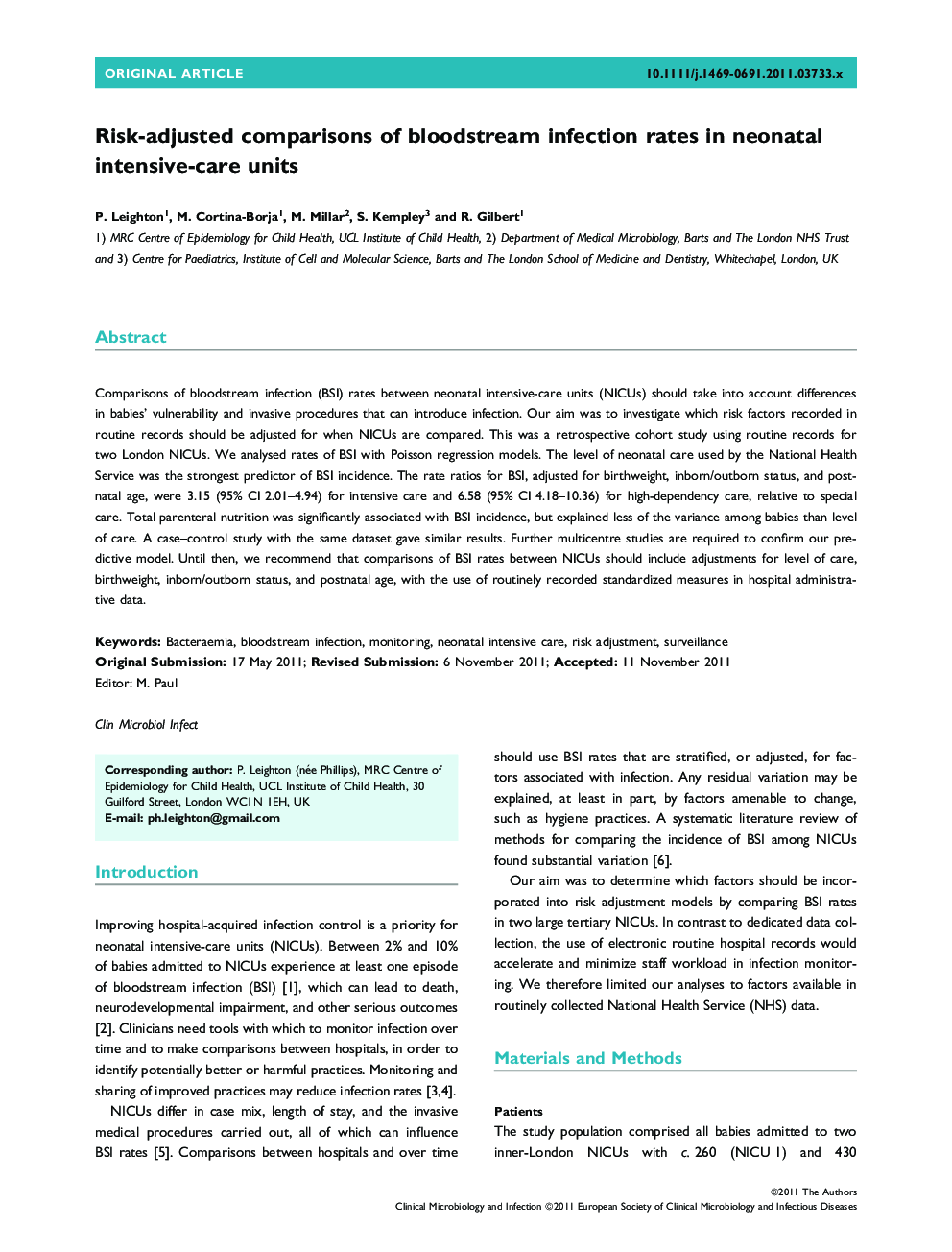| Article ID | Journal | Published Year | Pages | File Type |
|---|---|---|---|---|
| 6130698 | Clinical Microbiology and Infection | 2012 | 6 Pages |
Abstract
Comparisons of bloodstream infection (BSI) rates between neonatal intensive-care units (NICUs) should take into account differences in babies' vulnerability and invasive procedures that can introduce infection. Our aim was to investigate which risk factors recorded in routine records should be adjusted for when NICUs are compared. This was a retrospective cohort study using routine records for two London NICUs. We analysed rates of BSI with Poisson regression models. The level of neonatal care used by the National Health Service was the strongest predictor of BSI incidence. The rate ratios for BSI, adjusted for birthweight, inborn/outborn status, and postnatal age, were 3.15 (95% CI 2.01-4.94) for intensive care and 6.58 (95% CI 4.18-10.36) for high-dependency care, relative to special care. Total parenteral nutrition was significantly associated with BSI incidence, but explained less of the variance among babies than level of care. A case-control study with the same dataset gave similar results. Further multicentre studies are required to confirm our predictive model. Until then, we recommend that comparisons of BSI rates between NICUs should include adjustments for level of care, birthweight, inborn/outborn status, and postnatal age, with the use of routinely recorded standardized measures in hospital administrative data.
Keywords
Related Topics
Life Sciences
Immunology and Microbiology
Microbiology
Authors
P. Leighton, M. Cortina-Borja, M. Millar, S. Kempley, R. Gilbert,
